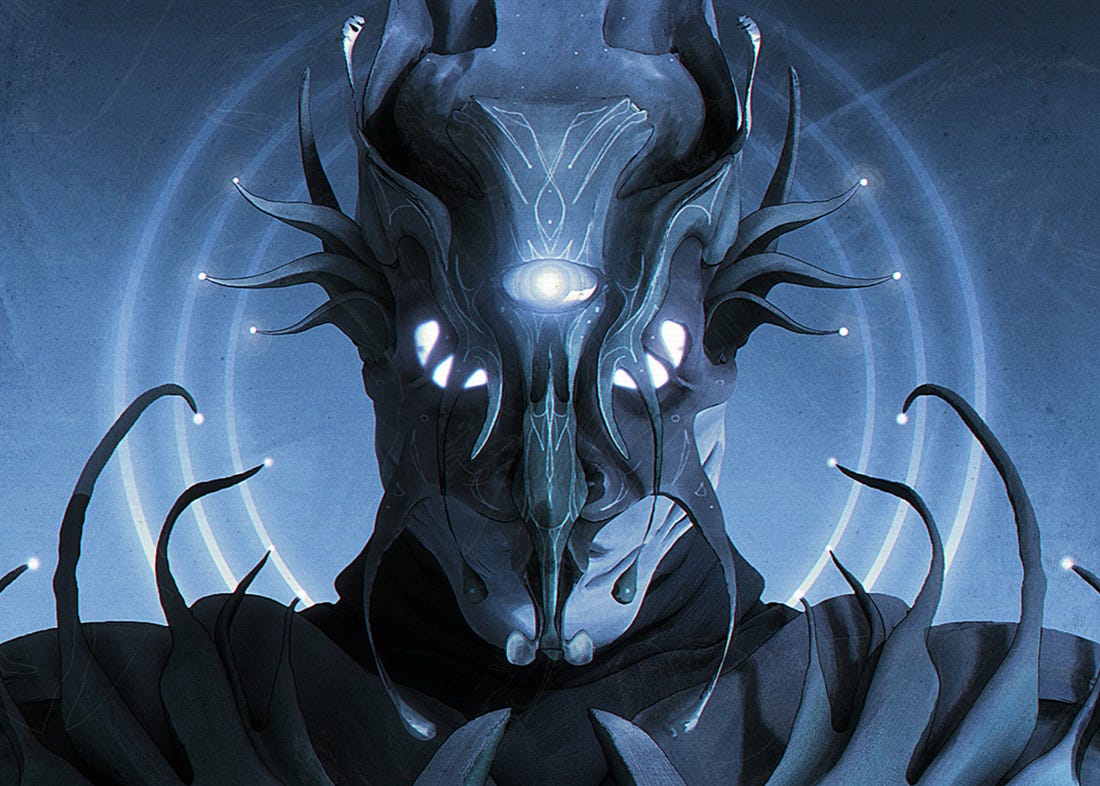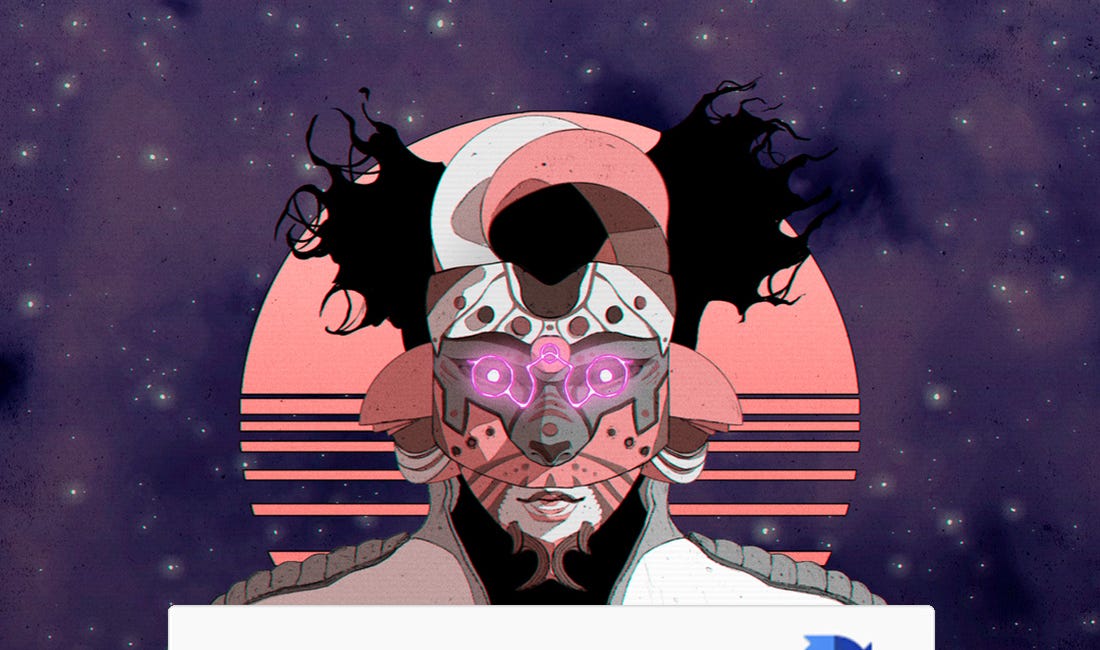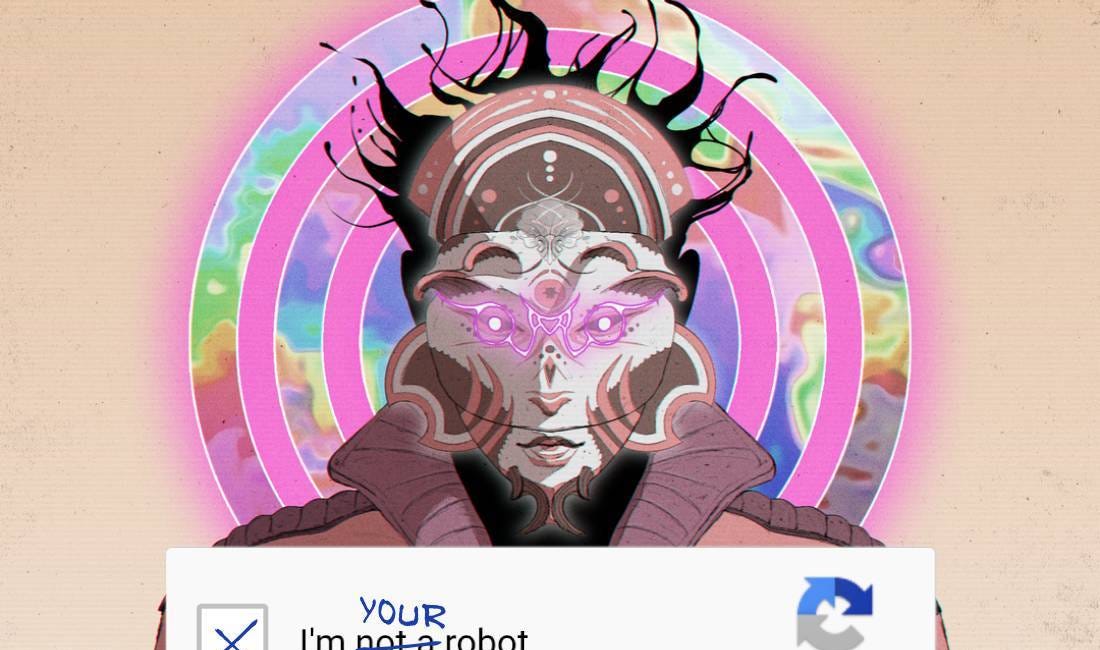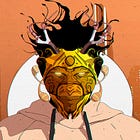Symbols of the Unknown: Masks, Totems, Secrets, and Myths
Why we need them, and where have they gone?
It’s time to wear masks and get shit wasted again! 🎉 Or is it just us?
We have a tradition called Farsang in Hungary, that’s celebrated between 6th January and Shrove Tuesday. It’s a bit similar to Halloween: in some places they wear super creepy masks and outfits, but usually Farsang means dress-up parties. As much as I loved doing it as a kid — okay, as an adult, too — I’ve always found it weird that we act so silly. And it’s not just in Hungary…
Farsang coincides with the Carnival period or Shrovetide in Christian traditions. And there is Maslenitsa in Russia, Mardi Gras in the US, Fasching in Germany and many more around the world. One thing is common in them, though: they let people hide behind masks and indulge in one way or another. A curious human need in my opinion, but nonetheless, a common one.
These cultural similarities, just like the ones in pantheons, genesis legends, and many ancient stories, fascinate me. They show something shared as humans. Masks, totems, and myths have been tools to explain the world and find our place in it for millennia. These traditions, often coinciding with faith and religion, bind communities by forging connections with forces beyond our understanding.
But in an era of hyperconnectivity, data-driven decisions, and algorithmic precision, have we outgrown these ancient signposts? Or have they simply shape-shifted? What can be considered modern day myth?
In other words, what’s the atheist nerd’s religion today?
This is Beyond the Veil, where we explore nerdy topics and collect indie (or at least lesser-known) art that relates to them.

Control, identity, worship, and morality
To understand how symbols craft our realities, first we must have a look at their use in the past, and their mutations in today’s culture.
More than mere disguises, masks have long been tools of power. Warriors donned them to inspire fear, shamans to commune with spirits, and rulers to command awe.
Once used in rituals and as instruments of social control, they've found new life in pop culture.1 Darth Vader's mask isn't just an iconic image; it's a symbol of identity erasure and the possibility of redemption.
The Guy Fawkes mask, popularized by V for Vendetta, has become a real-world totem for the Anonymous movement.
Even pandemic masks evolved beyond medical function, becoming symbols of division, solidarity, and resistance.2
And there is another, almost invisible mask we use every day. They are the curated online personas, the digital avatars, the fragmented selves we craft and slip into our digital lives. The accounts we maintain, the voices we cultivate in different digital spaces. They might be innocent reflections of us, or another form of control.
Totems were once carved in wood and stone, sacred emblems passed through generations. They marked lineage, identity, and kinship.3 A totem was an anchor of belief, something that tied its bearer to an origin and a fate.
Nowadays, Hogwarts houses sort millions into their symbolic families. Superhero insignias serve as modern heraldry, worn as clothing or inked onto skin. In the digital realm, gaming factions and fan communities have become our new tribes, complete with their own rituals, hierarchies, and lore.
We rally behind flags, brands, and niche interests as fiercely as our ancestors once stood behind their clan totems.
Mystery cults and secret societies wielded power through knowledge denied to the masses. The thrill of secrecy has always been intoxicating. That’s why secrets are a currency in entertainment and conspiracy alike.
The intricate lore of franchises like Dark Souls, Westworld, and Lost keep fandoms theorizing. These narratives, with their puzzle-like fragmented storytelling, satisfy our craving for initiation into hidden truths. Even conspiracy theories like QAnon can be seen as a modern (although definitely problematic) expression of this age-old human fascination with secret knowledge.

But perhaps the most profound transformation has occurred in the realm of myths. In a world where traditional religious narratives hold less sway, especially among younger generations, where do we turn for our stories of meaning and morality? You know where you are: it’s pop culture.
Cinematic universes like Marvel and Star Wars have become our new pantheons, complete with heroes, villains, and cosmic forces.4
These stories don't just entertain; they provide moral frameworks and shared cultural touchstones. The release of a new Marvel movie becomes a holy day. Fans gather to participate in a communal experience of storytelling. And even take part in it with modern scripture: fan theories.
The atheist nerd’s religion
Symbols have been repurposed and reinvented. They've migrated from stone circles and secret societies to cinematic universes and digital tribes, still fulfilling our need for meaning and belonging.
For many, these franchises function as a kind of “atheist religion.” They offer community, ritual, and even a form of spirituality. The fact that Jediism – based on the philosophy of Star Wars – has been recognized in census data demonstrates the power of modern myths.
Video games, too, have become a potent source of modern mythology. The Legend of Zelda, Skyrim, Elden Ring — they are modern pilgrimage sites. Their immersive worlds allow players to live their own hero’s journeys. Every choice matters. Every adventure is personal.
This way, players don’t just consume myths, they actively participate in making them with their own actions.
Meanwhile, science fiction has taken on the role of prophecy and parable. Shows like Black Mirror offer cautionary tales about technology and society. Much like ancient myths once warned against hubris or greed.
It looks like we simply changed our temples…
Traversing generations
Interestingly, each generation has put its own spin on myths. Gen X often revisits and reinvents the stories of their youth. The success of Stranger Things, with its 80s aesthetic and themes, speaks to this generational longing for the myths of childhood.
Millennials, on the other hand, have embraced participatory culture, expanding mythic universes through fan fiction, theories, and crowdsourced lore.
They've also been at the forefront of using pop culture as a lens for social justice, finding allegories for real-world struggles in the pages of X-Men comics or the districts of The Hunger Games.
Gen Z, digital natives that they are, blur the lines between consumer and creator, reality and fiction. They craft personal mythologies that blend astrology apps with mindfulness practices, TikTok trends with ancient symbolism. For them, the universe itself might be a simulation – a myth that reflects both their digital immersion and their search for cosmic meaning.
Of course, these are just examples, and generational categories always forget about individuals and their subcultures of choice. Still, it’s interesting to see how each era creates its own myths.

So what?
What all of this tells me is that our need for symbols – for masks to transform us, totems to identify us, secrets to intrigue us, and myths to guide us – is as strong as ever. These elements endure because they address the fundamental human desire to know one’s place in the vast universe.
In our fragmented, digital world, these modern myths and symbols serve another crucial function: they give us common ground. In an age of personalized content streams and niche interests, shared stories and symbols – whether they come from a Marvel movie, a viral TikTok trend, or a beloved video game – provide a much-needed sense of cultural cohesion.
So the next time you overhear an intense discussion about the latest fan theory, remember: you're witnessing the latest chapter in humanity's ongoing quest for meaning.
Relevant articles
Are you here for The List?
Don’t worry, we will send it to you in about a week. Artists, games, animations, and maybe some random jewels…
Why later? We have been collecting more and more lesser and lesser known art projects. 12 is our new target number for quality picks, and we need a little time to achieve that.
We’d appreciate it tremendously if you shared this post with a geeky art enthusiast you know. Let’s revive the playful, creative side of humanity by promoting healthy escapism and amazing artists.
Until then…
Check out these lists from the curious creators of Omnimorphs.
Time to escape to your world and create!
Adrián
Scribe of the Omniscient
👁🗨
This newsletter is crafted with 💜 by humans. We use AI for online research and English language accuracy.
Fun quote
“The omnimorph donned the mask and the material began to shift and change. A ring formed over the head and tones of deep purple filled the mask. It was the face of Wisdom manifested. It was the face of an Ancient.”
quote from our narrative artbook Omnimorphs: Beyond the veil












